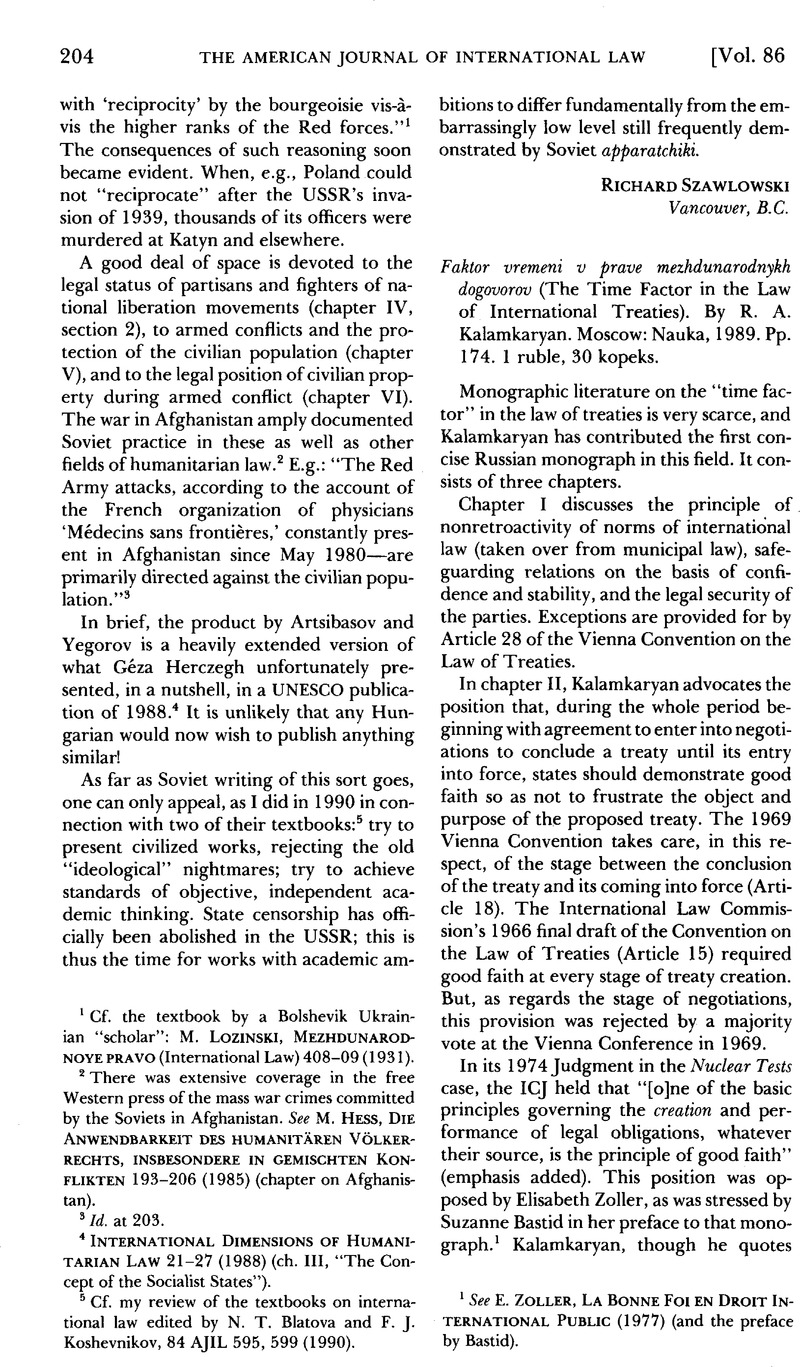No CrossRef data available.
Article contents
Faktor vremeni v prave mezhdunarodnykh dogovorov (The Time Factor in the Law of International Treaties). By R. A. Kalamkaryan. Moscow: Nauka, 1989. Pp. 174. 1 ruble, 30 kopeks.
Published online by Cambridge University Press: 27 February 2017
Abstract

- Type
- Book Reviews and Notes
- Information
- Copyright
- Copyright © American Society of International Law 1992
References
1 See E. Zoller, La Bonne Foi en Droit International Public (1977) (and the preface by Bastid).
2 See my review in 81 AJIL 459 (1987).
3 Concerning the North Atlantic Treaty, the author goes so far as to quote an old article bearing the title The North Atlantic Pact: The Defense of Capitalism and a Threat to Peace, in Sovetskoye Gosudarstvo 1 Pravo, No. 4, 1969.
4 As far as the nature of the Warsaw Treaty and the organization based on it is concerned, the East European press does not mince words as to the “colonial” way this mechanism was used by the USSR to subdue its “minor partners,” especially after the decision was taken, on February 25, 1991, in Budapest, to liquidate the military part of the Warsaw Treaty by April 1, 1991. Such words were repeated on the occasion—long overdue—of the signing in Prague on July 1, 1991, of the protocol on the termination of the Treaty.




